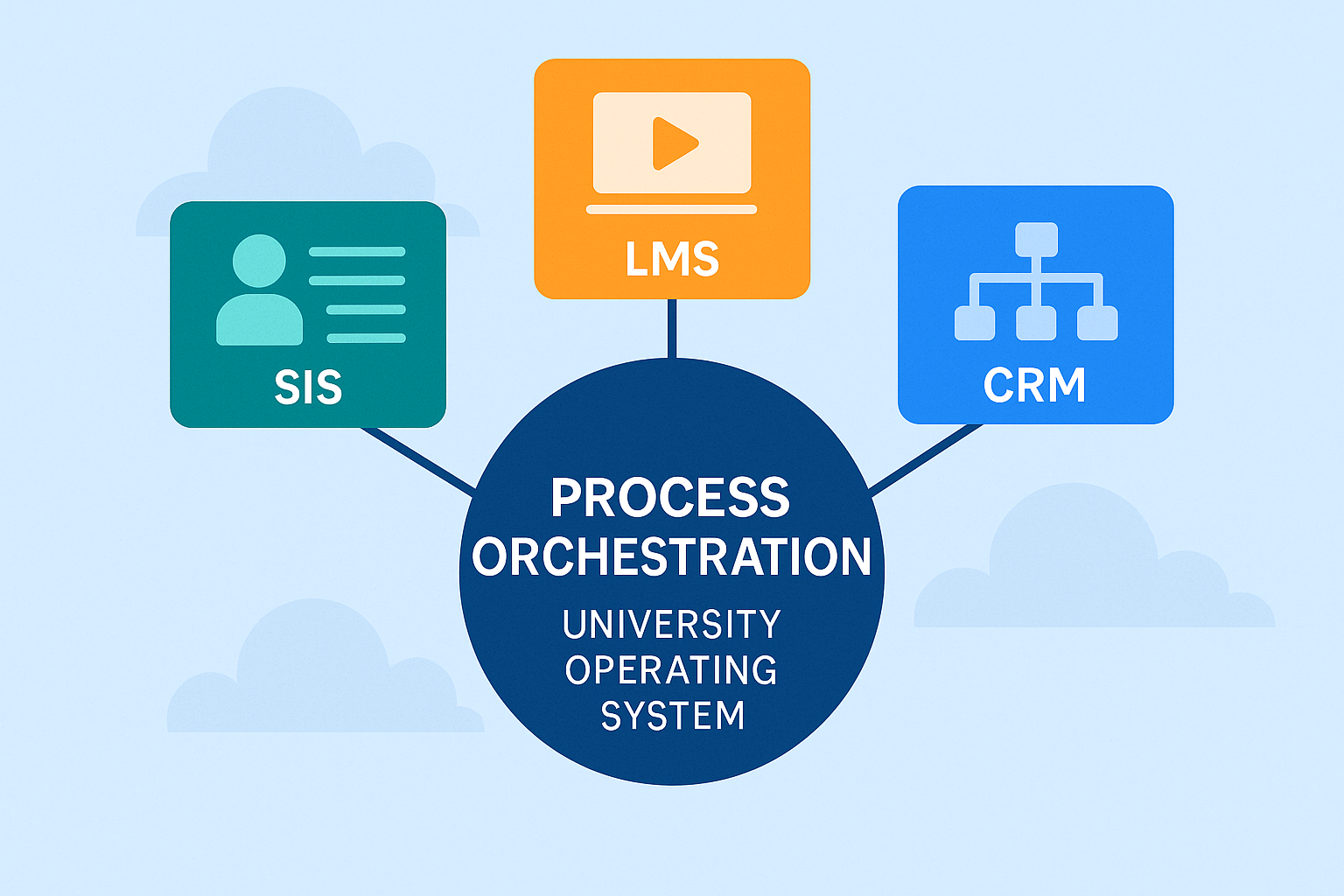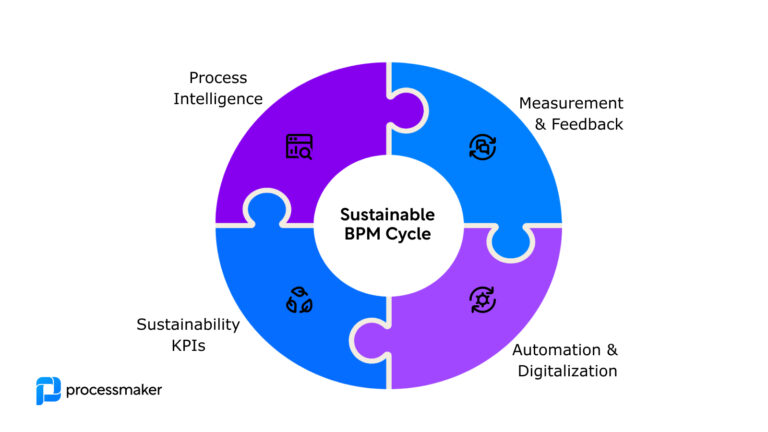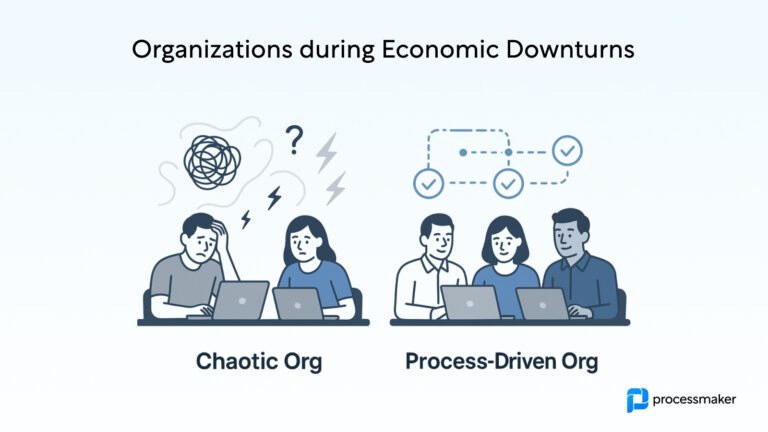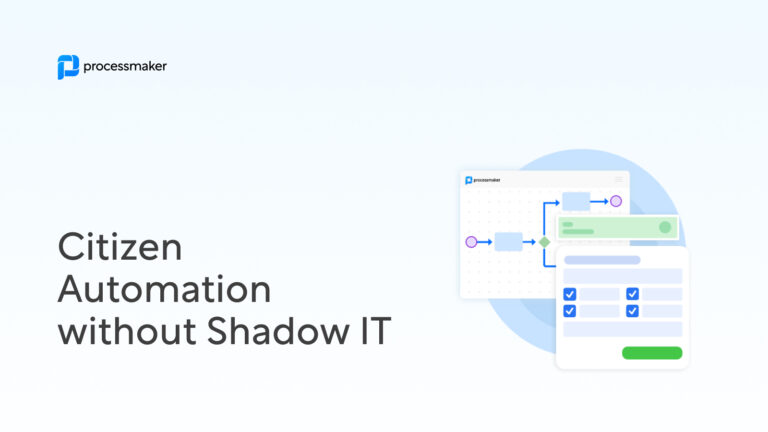In today’s rapidly evolving higher education landscape, institutions are under intense pressure to modernize. Student expectations are shifting, enrollment numbers are unpredictable, and internal departments are relying on increasingly fragmented software systems.
While universities have invested in powerful solutions like Student Information Systems (SIS), Learning Management Systems (LMS), and Customer Relationship Management (CRM) platforms, many still face a critical problem: their systems don’t talk to each other.
This is where process orchestration becomes indispensable. Think of it as the university operating system — the missing layer that connects people, data, and systems across campus to deliver seamless, student-centric experiences.
What Is Process Orchestration in Higher Ed?
Process orchestration refers to the coordination and automation of complex, cross-functional workflows between disparate systems. In a university setting, this could mean automating the flow of information between admissions, academic departments, registrars, and student services.
Without orchestration, institutions end up with:
- Manual workarounds that slow down critical operations
- Disconnected systems and inconsistent data
- Poor student experiences due to delays and inefficiencies
By implementing process orchestration, universities can unify their digital ecosystem without replacing the core systems they already rely on.

The Case for a University Operating System
Universities don’t need more tools — they need smarter coordination between the ones they have.
Your SIS may handle registration, your LMS manages course content, and your CRM powers recruitment. But what bridges the gap between these systems? What ensures that a student’s application data flows into orientation planning, or that academic records inform advising workflows?
A process orchestration layer serves as the operational backbone of the university, ensuring that information moves efficiently, securely, and intelligently across the student lifecycle.
Real Use Case: Transfer Credit Evaluation (TCE)
One area where this orchestration is critical is Transfer Credit Evaluation (TCE). This process typically requires coordination between:
- Admissions
- Academic departments
- The Registrar’s office
- External institutions
Without orchestration, transfer students face delays, unclear timelines, and redundant paperwork. With ProcessMaker’s TCE solution, universities can:
- Automate transcript intake and parsing
- Route evaluations to the correct academic reviewers
- Update SIS records in real time
- Notify students automatically about their credit status
This is just one example of how orchestration improves student satisfaction, reduces manual work, and accelerates time-to-decision.
Key Benefits of Process Orchestration in Higher Education
- Streamlined student journeys: From application to graduation, students experience fewer delays and more clarity.
- Increased staff productivity: Automation reduces repetitive tasks and allows staff to focus on advising and support.
- Better data integrity: Systems stay in sync, reducing errors and redundant data entry.
- Faster onboarding and transitions: Especially for transfers, international students, or program changers.
- Greater agility: Quickly adapt workflows in response to policy changes or new compliance requirements.
Why ProcessMaker?
ProcessMaker is uniquely positioned to serve as the orchestration layer in higher education institutions. Our platform is built for:
- Low-code customization to adapt to any institutional process
- Seamless integrations with leading SIS, LMS, CRM, and ERP systems
- Role-based access controls and audit trails to support compliance and transparency
- Scalable automation across departments and campuses
Whether it’s powering a Transfer Credit Evaluation system, financial aid appeal workflows, or new student onboarding, ProcessMaker provides the glue that holds higher ed tech stacks together.
FAQs
What is a university operating system?
It’s a conceptual layer of orchestration that coordinates processes and data flow between existing systems like SIS, LMS, CRM, and ERP platforms. Think of it as the connective infrastructure enabling digital transformation in higher ed.
Do I need to replace my SIS or LMS to implement process orchestration?
No. Process orchestration integrates with and extends the value of your current systems. It’s designed to unify, not replace.
How does process orchestration impact students?
Students benefit from faster turnaround times, fewer manual errors, and a smoother experience across touchpoints such as registration, advising, financial aid, and credit evaluation.
What processes can be orchestrated in higher education?
Examples include admissions, transfer credit evaluation, financial aid appeals, change of major requests, course approvals, grant applications and graduation clearance.
Request a demo to see how ProcessMaker can serve as your university’s operating system.





